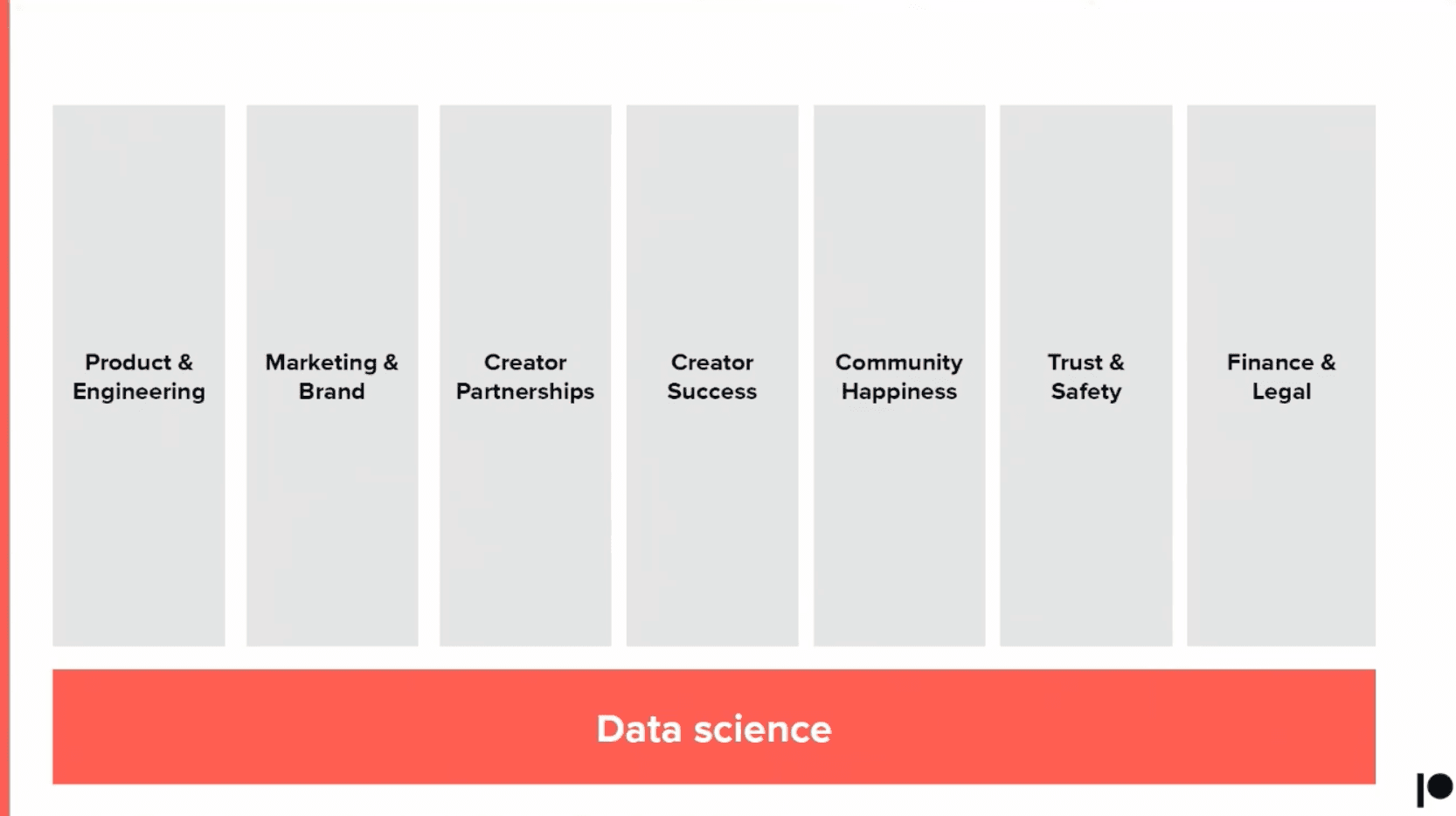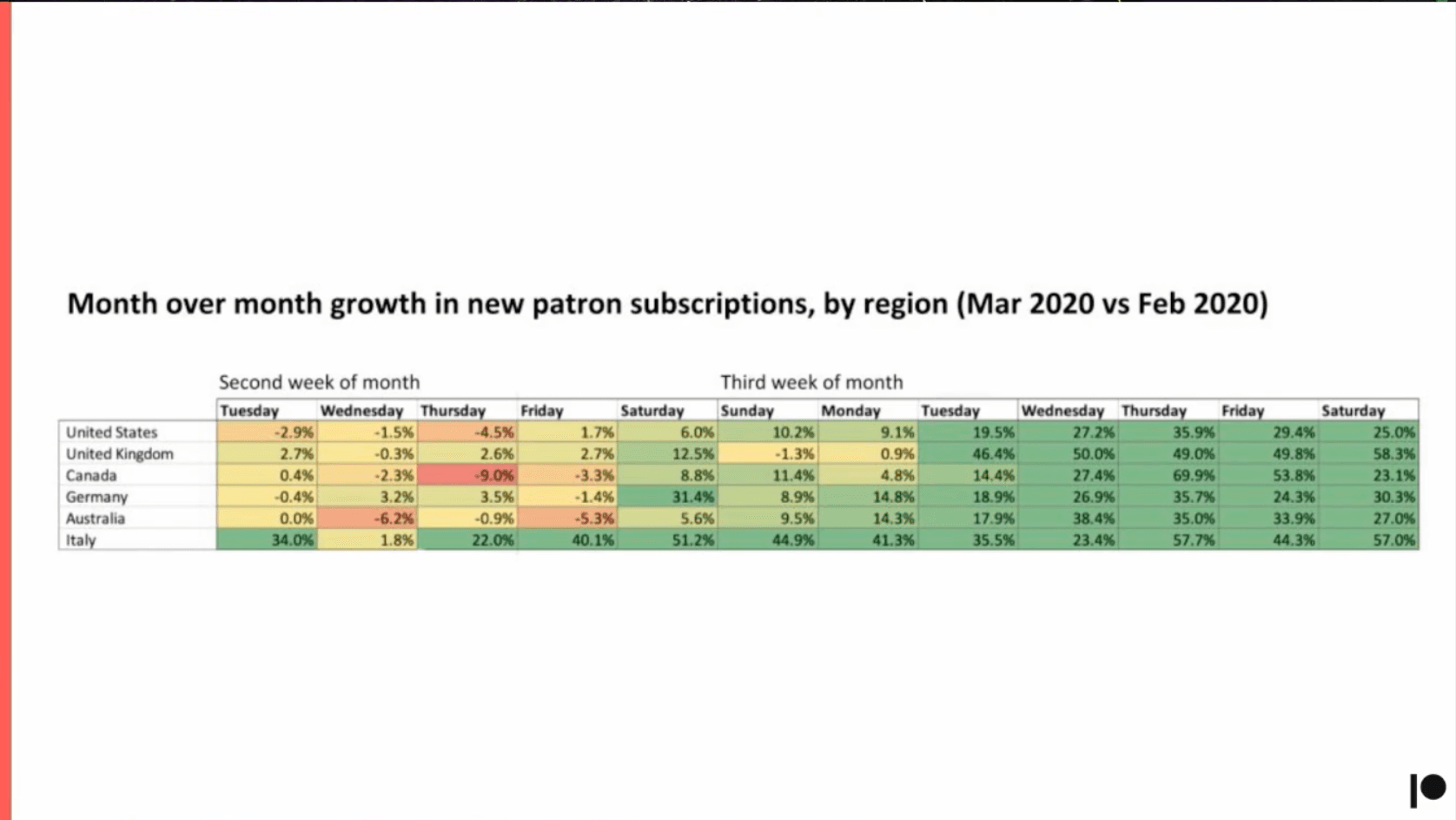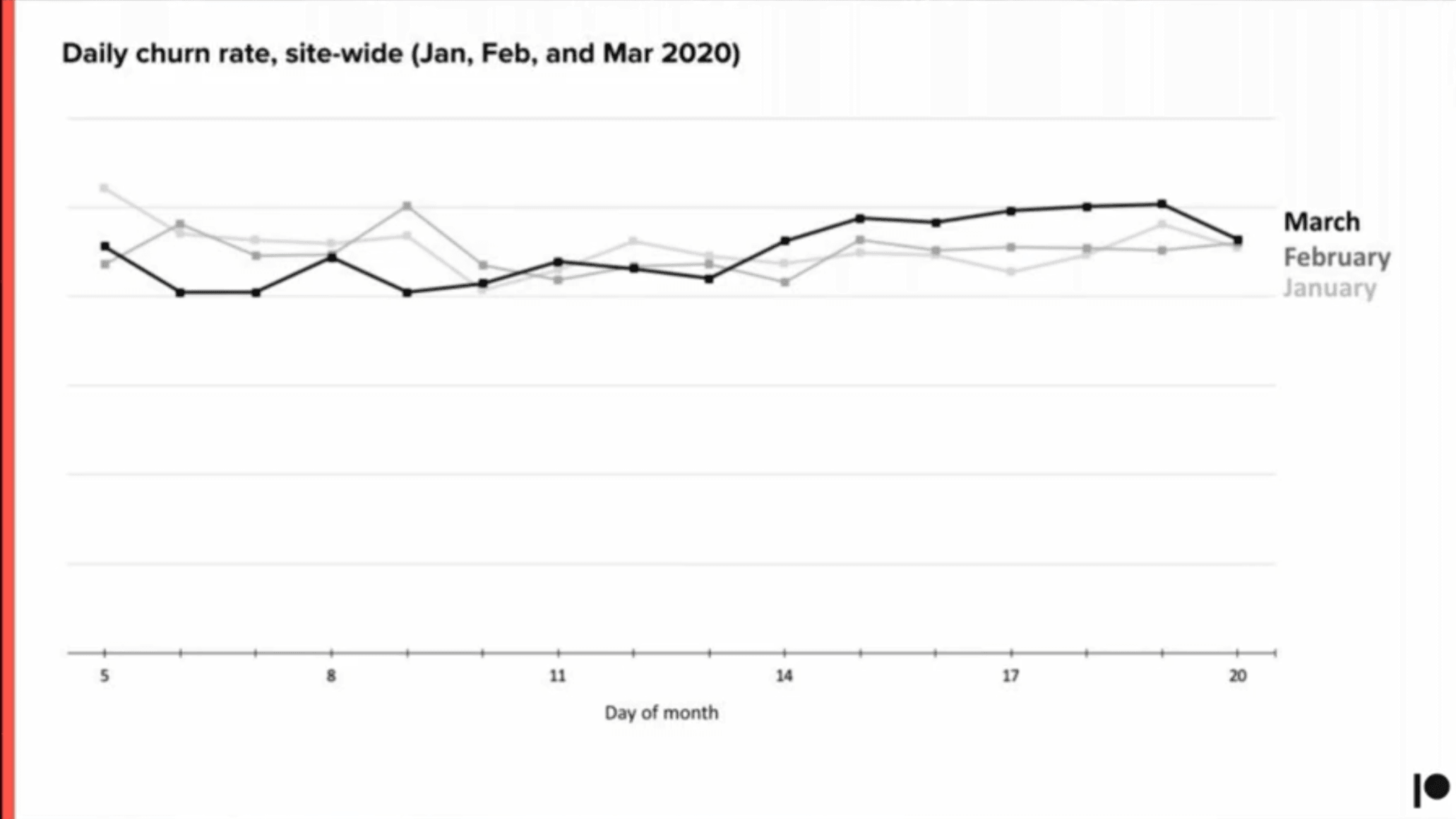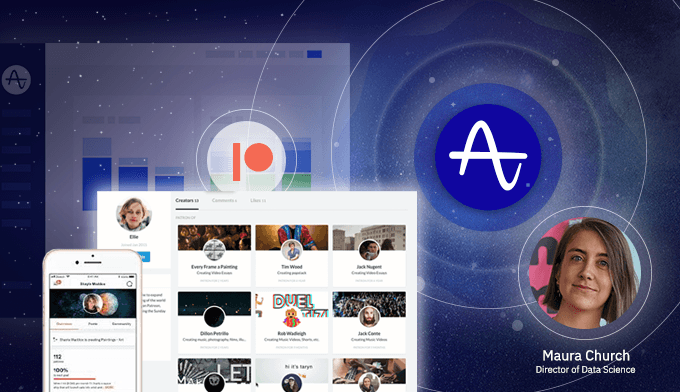How Patreon Embraces Cross-Functional Data Leadership
In her Amplify session, Director of Data Science Maura Church shared how Patreon empowered their teams with data to fuel growth in 2020.
Patreon has experienced incredible growth over the last eight months, even in the midst of a global pandemic. A large part of their success can be attributed to effective cross-functional data leadership. At this year’s Amplify conference, Maura Church, director of data science at Patreon, shared how her team empowers the entire organization to make smart business decisions.
Data Science Across All Departments at Patreon
Patreon looks at data science as a horizontal layer that enables all teams across the business to make better decisions. This means it’s tightly integrated with many different departments, looping the data team in from start to finish.

Maura and her team ask specific questions of the metrics to ensure they’re getting the most value from the raw data.
- How is the product and engineering team using data?
- How is the creator partnerships (sales) team using data?
- How is data helping finance and legal make better forecasts?
Knowing the answers to these questions helps Maura’s data science team understand how to best serve different departments and the business as a whole, enabling them to uncover actionable insights that teams can use to build campaigns and new products and contribute to overall business goals.
Patreon spends a lot of time thinking about a trifecta across all departments and functions: how they can build a better product that’s fueled by great marketing and a compelling brand and backed by a lot of their own finance. This approach is sustained and backed by data.

3 Keys to Strong Cross-Functional Data Leadership
Strong cross-functional data leadership is dependent on more than just collaboration and communication. To Maura, there are three keys to strong cross-departmental data leadership:
- Context
- Data relevance
- Storytelling
Context
Patreon tries to make sure data scientists sit with the individual product teams and are embedded in their decisions and what they’re trying to build. They don’t just hop in when data analysis is needed—this would require a briefing to get the data team up to speed.
When the data team is involved on a day-to-day basis with other departments, they have more context and an understanding of what they’re trying to accomplish. This enables them to recommend the most effective use of data.
Say, for example, you have a data scientist who goes from working on marketing analytics one day to machine learning the next and A/B testing the following day. They’re not going to have the business context and depth needed to make informed strategic decisions. Instead, someone from the data science team should be ingrained in each project from the beginning, so they have an intimate understanding of where the data comes into play.
Data Relevance
Data shouldn’t be the only factor in every decision. Sometimes, decisions will be led by user feedback or inspired by design.
Use data where it’s most useful and relevant. For example, at Patreon, they noticed differences in growth based on region in February and March 2020, when the COVID-19 pandemic spread across the world. Using data, Patreon deduced that faster subscription growth was linked to regions that had more government-sponsored financial support for creators.

Maura and her team dug into the data to find out which geographical growth segments were significant at the time. When an external event causes positive growth, they’ve learned to lean into that change and see if there’s an opportunity for productization.
Remember, it’s important you don’t look at data through tunnel vision. Instead, consider the bigger picture using various data points and qualitative inputs to give you a holistic overview of the organization.
Storytelling
Storytelling involves understanding what the data is showing about what’s happening in the business. The data team then has to make that story concise and clear, so all leaders across Patreon can make more informed decisions, enabling them to make a better product for creators.
It’s easy for eyes to glaze over when talking about metrics. That’s less likely though when the numbers tell a story.Stories are addictive, memorable, and elicit emotions. Stories also help reinforce the value of data across the organization.
It’s important to understand what story you and your teams are trying to tell and how data can help you tell it in a rigorous, honest, and better way.
Here’s an example of storytelling in action: a few years ago, Patreon launched a live-streaming option for creators. But data science wasn’t really involved in the decision around how to build the product and how big they could anticipate it to be. Maura and her team did some very basic analysis that looked at how many creators mentioned live streaming, but they lacked the context of sitting with the product team and understanding the end goal of live streaming.
As a result, the data science team was brought in after the fact to understand performance. While they had originally projected that 40% of creators would adopt the new live-streaming option, only about 1% actually did—despite great marketing and awareness.
This failure to integrate data science from the beginning and consider the story they were trying to tell led Patreon to rethink how they use data in their product and go-to-market process.
Using Cross-Functional Collaboration to Prepare for Growth in 2020
When the COVID-19 pandemic hit, Maura and her team were set up for success, with context, data relevance, and storytelling in place. They saw the potential for a positive impact on their product as more people stayed at home and were looking for entertainment.
Segmenting the Audience
Anticipating growth, the team paused and asked themselves, “What do we think could change with behavior?” They collected data on two key factors:
1. Churn: Patreon analyzed what might cause churn—financial and economic instability, in this case—and ways to reactivate patrons by providing support during such an anxious time. They reassured creators that the audience was there and growing.

2. Creators launching: Patreon also conducted a segmented, narrow analysis of creators launching and attributing their launch to stay-at-home orders due to COVID. They saw new types of creators and said, “What can we do in the product that’s going to help these creators? Maybe we can provide more resources.”

Turning the Data into a Story
Patreon took this data and turned it into a story, both for their internal teams and for the creators. Creators were anxious about stability, but Patreon was able to use data to show them how fans were flocking to the platform. And internally, they looked at ways to build a better product and ensure it’s resilient and scalable enough to handle a huge influx of growth.
Moving Forward with New Products and Rich Data
As a result, Patreon launched a new product for local businesses and helped those businesses earn hundreds of thousands of dollars of recurring membership revenue. Not only did they launch a new product, but they also tied it back to the data.
Patreon made sure these creators were tagged and identified as local businesses. So, if in a few years, Patreon wants to understand how local businesses grow versus podcasters or any other segment, they have that data and will be able to then help the business make even better decisions in the future.
Put Systems in Place for Sustainable Growth
Maura’s closing advice for cross-functional data leadership? Ensure you have a process for understanding changes in product metrics across all areas of the business and framing them as product opportunities. Think about the systems you might need for studying behavior over time and what segments you need to understand in your business. Check out the rest of Amplify’s compelling lineup andwatch session recordings here.

Aly McGue
Former Customer Advocacy Director, Amplitude
Aly McGue is a former Customer Advocacy Director at Amplitude. She focuses on building and nurturing strong Amplitude advocates and bringing their stories to life.
More from Aly




